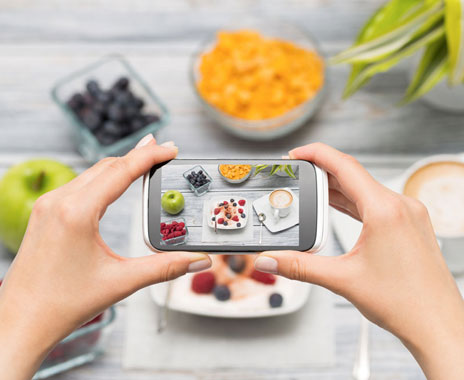Every marketer knows that “the world has gone mobile,” but not every marketer is prepared to apply this knowledge for maximum results. Many brands are still racing to catch up to the pace of change the smartphone has enabled. But have no doubt, this shift is real: according to eMarketer, the average U.S. consumer spends three hours and 15 minutes a day within mobile apps, and an additional 51 minutes a day on the mobile web. Perhaps these numbers aren’t too surprising when coupled with the fact people check their smartphones an average of 150 times a day.
All of this time people spend on mobile has created new opportunities—and challenges—for all businesses, including restaurants. Marketers must meet current (and potential) customers wherever they may be—and in 2017, it’s increasingly on their mobile device.
Mobile is an open playing field—Jump In
When thinking about mobile and how to best reach diners on their most personal device, there are a variety of considerations to take into account. But there are a few key areas that we regularly explore with restaurant marketers:
1. Understand Intent
Consider this: 60 percent of people trying to decide where to eat use only their mobile device to help with their decision—and 75 percent of those people haven’t decided where to dine when they start their search. For a brand, this is the opportunity to “create the crave,” show off your yummy food, and give diners a reason to walk into your restaurant when they are going through this decision-making process. And the beauty of mobile is that you can do so right at the point of hunger. What’s the point of telling everyone about your tempting sandwich special when it’s 10 at night and your diner has already brushed her teeth and gotten into bed.
2. Pick the Right Moment
Let’s think about the first thing most people do when they wake up in the morning. They check their phone, which probably includes a scroll through Facebook or Instagram given one in five mobile minutes are spent across these two platforms. On the flip side—if you are a brand that is focused on its breakfast offering, this likely sounds like an ideal time to engage with potential diners who are starting to think about where they want to grab breakfast on the way to work.
The good news: this opportunity to reach your diners at the most relevant time, where they are spending their time, is possible thanks to the unique targeting capabilities afforded by social media platforms.
3. Think Local
Ruby Tuesday has seen success tapping into consumers’ mobile behavior in order to drive in-store traffic and sales. Over a week-long campaign, the restaurant chain ran dynamic local awareness ads on Facebook within a 3-mile radius of its 734 U.S. locations.
To understand the impact of its campaign, the brand split a sample of 160 locations into a control group and a test group, matching them by average guest counts, population and location type. Ad creative for both groups featured mouth-watering images of the restaurant’s entrées, highlighting Ruby Tuesday’s variety dishes—from juicy cheeseburgers to the fresh Garden bar. The call to action for the test group ads urged people to come into Ruby Tuesday because the restaurant was just 1 to 3 miles away. A lot closer than most diners thought. The results spoke clearly to the impact of serving mobile ads at the right time, and in the right place. Ruby Tuesday saw a 3.1 percent increase in guest count and a 2.6 percent increase in sales.
The Restaurant of The Future
Mobile is your opportunity now, but what about the future? It’s important for the restaurant industry to strike a balance between mastering the basics of what drives effective mobile creative while looking to the future and what it will take to compete in an increasingly mobile and technology-enabled world. Ask yourself the question: are you prepared for what this industry will look like five or 10 years from now?
We’ve had a glimpse of what’s to come—economic factors are impacting restaurant budget allocations and to remain competitive brands must think ahead to how they can meet their diners ever growing and demanding expectations. One way to do so is to tap into the very technology that is enabling these changes. This might mean exploring mobile-ordering & payments, predictive ordering, messaging 1:1 with diners, incorporating screens into the dining experience, and more. To be competitive, you must think about your marketing beyond the top of the funnel and to look at the mobile device as a means to driving direct sales.
Domino’s Pizza is a great example of a restaurant taking this approach—openly calling themselves a technology company that happens to deliver pizza. Recently, the brand introduced a Facebook Messenger bot—enabling pizza lovers to order a pizza from Domino’s Pizza, right from Messenger, with the ability to track an order and see past orders all within the experience.
If you aren’t thinking about these types of experiences yet—you are not alone. The restaurant of the future has yet to be defined and the opportunities to innovate are endless. How will you help define it? Chains that embrace technology will fare better in the Restaurant Wars. Forward thinking brands will win on convenience, speed and service.











